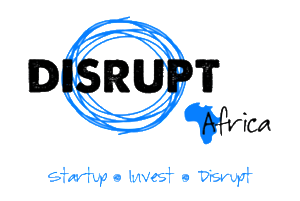African solar startups are solving a serious problem, namely the continent’s major lack of power. Combine this with the evolution of innovative business models, and you have a sector that is proving seriously popular with investors.
Solar was the most popular sector for investment in African tech in 2015, according to Disrupt Africa’s African Tech Startups Funding Report, with East African companies M-KOPA Solar and Off Grid Electric leading the charge.
That popularity has remained the case this year, if to a slightly lesser extent, with PEG Ghana among those to have raised sizeable funding. There are a number of reasons why this is the case.
According to Simon Bransfield-Garth, chief executive officer (CEO) of pay-as-you-go solar company Azuri, the solar sector benefits from the growing attractiveness of Africa as an investment destination as a whole.
“With a global slowdown in developed markets and the countries that serve them, the African subcontinent has been posting some of the highest percentage growth rates of any region in recent years,” he said.
Solar, with all the social and economic impacts it can have on a continent where almost 600 million people lack access to electricity, ticks two boxes. It has a high possibility of returns, and also has huge developmental impact. Yet innovative business models are necessary to make a success out of solar.
“This attractiveness was not the case initially, and in Azuri’s infancy it became clear very quickly that the business models found in other economies would not work in Africa,” said Bransfield-Garth.
“A complete business model which worked in harmony with the market features had to be developed.”
This business model has, in most cases, been pay-as-you-go, allowing customers to avoid the initial large outlay on solar systems by paying over time using mobile money. This has had the effect of opening up the market, making solar more available, and even allowing customers to build a credit rating. Companies like PEG Ghana and M-KOPA Solar are starting to sell other products, such as fans and solar TVs, to their customers in the same way.
Koen Peters, executive director at the Global Off-Grid Lighting Association (GOGLA), said the global solar industry has been growing exponentially over the last few years. Since 2008, the industry has attracted just over $511 million in investment, the vast majority of that being raised since 2014.
“Attendance levels at meetings around investments in off-grid energy suggest the interest is only increasing,” he said.
Yet more is needed. Despite these impressive figures, almost all companies report that access to finance still remains one of the major challenges for further growth.
“In particular, early stage financing, which is critical to replicate the early successes in other countries, debt for working capital to help scale businesses, and local currency debt funding, important to reduce foreign currency risks and thus overall financing costs, are cited as significant challenges,” Peters said.
As a result, accessing investment remains one of GOGLA’s key focuses, as the association representing the sector. The organisation is working closely with partners to generate market intelligence and facilitate productive dialogue between industry and investors, to help boost investment across the sector. One example of such facilitation is the Unlocking Solar Capital conference, which GOGLA is co-organising in Nairobi in November this year.
Xolani Mncedane, a senior research analyst in Best Practices at Frost & Sullivan Africa, agrees there is still more to come when it comes to investment in solar.
“The solar energy industry is still in its early stages of development in most countries in Sub-Saharan Africa,” he said.
“The market segment that seems to be most attractive to investors is the utility-scale sector, which in most cases is backed by government incentives and has clear energy policies that depict a 20-year roadmap for renewable technologies of interest, making it easier for financiers to make long-term investments decisions.”
This, Mncedane said, has attracted investors more inclined to support solar projects that have secured long-term financing agreements, averaging 15 years at a minimum, and a guaranteed pricing and rate of return averaging 20 per cent.
He said investors will need to revise their investment matrix in order to avoid missing opportunities emanating from the industrial, commercial and residential sectors that may not be backed by any policies or incentives.


